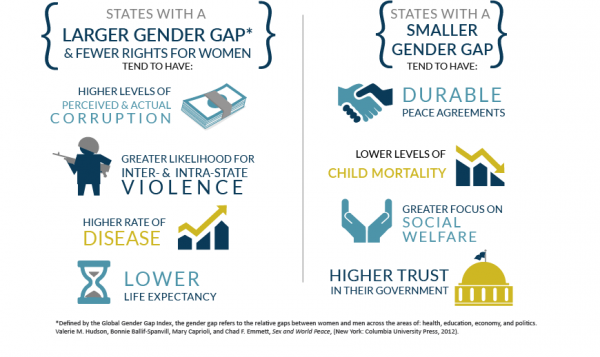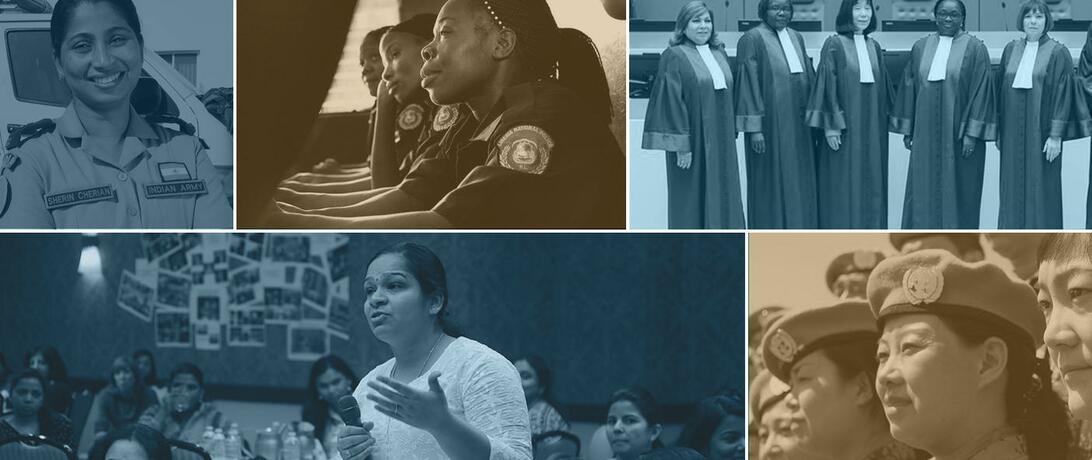Increasingly, though, an evidence-based argument is taking shape. Whether in local police forces, on-the-ground peacekeeping forces, UN bodies, elected positions and governing bodies, or in high courts, increasing the number of women at the table has a tangible positive impact, including reducing corruption, increasing trust, and creating more sustainable peace.
In a recent blog from OEF’s Our Secure Future program, Catie Fowler highlights evidence from four main areas of Women, Peace and Security: political participation, peacebuilding and conflict resolution, peace and security operations, and countering violent extremism.

See also: Illustrated fact sheet of Women, Peace & Security by the Numbers.
Photos, from top left, clockwise: A member of the Indian Army, UN Photo/Pasqual Gorriz; Women police officers at the Salem Police Station in Monrovia, Liberia. Photo by Marcus Bleasfadale/VII ; In March of 2018, six new judges were sworn in to the International Criminal Court, including five women ; UN female Peacekeepers. Photo by Evan Schneider/ UN Photo ; A woman in Afghanistan displays her voter registration card in 2009, Photo by Canada in Afghanistan ; NGO Working Group on Women, Peace and Security members Suaad Allami (left) and Radhika Coomaraswamy, Photo by UN Photo/Amanda Voisard
